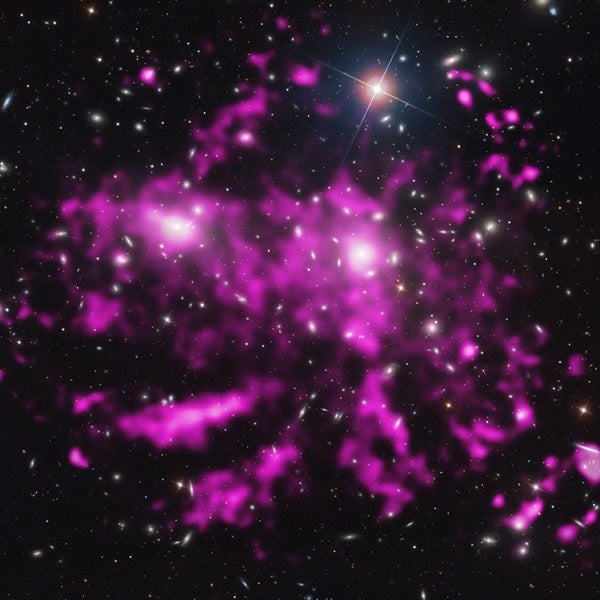The research used powerful computer simulations to study galaxies that have fallen into the Coma Cluster, one of the largest structures in the universe in which thousands of galaxies are bound together by gravity.
It found the galaxies could have fallen into the cluster as early as 7 billion years ago, which, if our current theories of galaxies evolution are correct, suggests they must have lots of dark matter protecting the visible matter from being ripped apart by the cluster.
Dark matter cannot be seen directly, but the mysterious substance is thought to make up about 84 percent of the matter in the universe.
Cameron Yozin from the University of Western Australia, who led the study, says the paper demonstrates for the first time that some galaxies that have fallen into the cluster could plausibly have as much as 100 times more dark matter than visible matter.
Yozin says the galaxies he studied in the Coma Cluster are about the same size as our Milky Way but contain only 1 percent of the stars.
He says the galaxies appear to have stopped making new stars when they first fell into the cluster between 7 and 10 billion years ago and have been dead ever since, leading astrophysicists to label them “failed” galaxies.
This end to star formation is known as “quenching.”
“Galaxies originally form when large clouds of hydrogen gas collapse and are converted to stars; if you remove that gas, the galaxy cannot grow further,” Yozin said.
“Falling into a cluster is one way in which this can happen. The immense gravitational force of the cluster pulls in the galaxy, but its gas is pushed out and essentially stolen by hot gas in the cluster itself.
“For the first time, my simulations have demonstrated that these galaxies could have been quenched by the cluster as early as 7 billion years ago.
“They have, however, avoided being ripped apart completely in this environment because they fell in with enough dark matter to protect their visible matter,” Yozin said.










